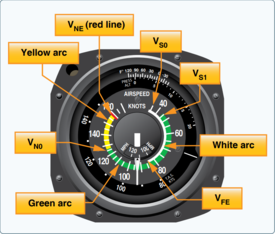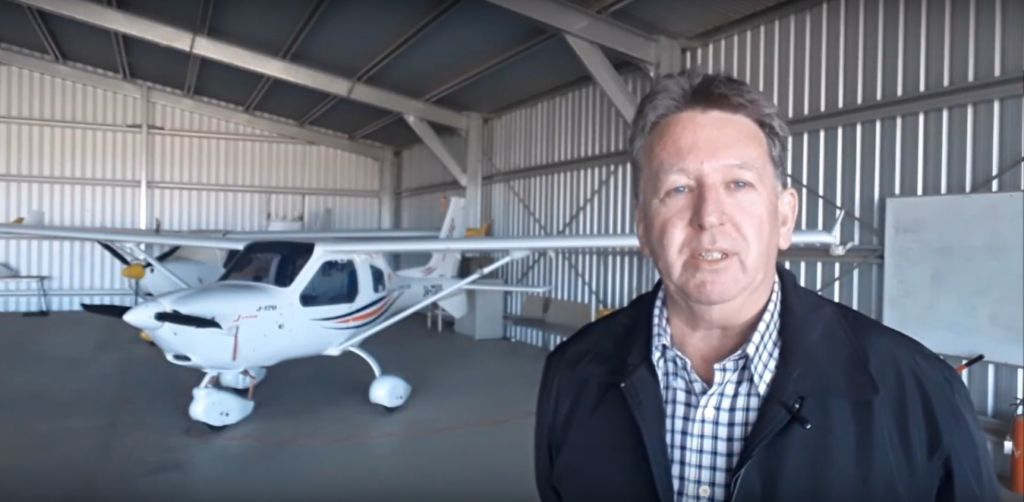Why Pilots Die V Speeds
Why Pilots Die – V Speeds
Why pilots die flying aircraft is a serious question and something I want to touch on. Pilots die often due to a combination of factors. One of the major flying factors is speed control in critical phases of flight. This is takeoff and landing where most accidents statistically happen. But why? There are a few possible reasons so lets look at them.
I want to take a look at Vspeeds when flying as well as cockpit sterility and other external factors. We as simulator and or real world pilots can stop it happening by just considering and planning our flights better. Simply removing distractions as well as being prepared for the most common emergencies when flying is a really great start.
In research the loss of control in crucial parts of flight is high in GA aircraft compared to the airline world.
Why is this? It may be because of single pilot flying in an operational environment compared to a multi crew environment.
The second pair of eyes and the sharing of work load could possibly be a factor in why airlines are safer than GA.
Lets look at some factors around this problem like knowing Vspeeds as well as a reference to V Ref and sterile cockpit environments and how they affect pilots.
What are V Speeds?
What are Vspeeds and how do they affect pilots?
Simply Vspeeds are speeds every aircraft has determined while they are being certified for climb, stall, maneuvering and descending to name a few. There is a speed you must not exceed either go faster than and this is called Vme (Velocity Never Exceed). There is also a speed Vso which is the minimum control speed with full flaps extended.
There is a speed and an abbreviation like these which you can see on the speed Indicator diagram. If we follow these speeds we should not be crashing but factors like distractions from passengers or other aircraft issues combine to distract pilots causing them to exceed the limits of their aircraft.
A better understanding of these speeds and cockpit management can help to improve the rate we lose pilots.
One other factor is cockpit training and possibly cockpit management with co pilots and passengers plus the mind set of pilots.

The Causes of Crashes
In researching into why pilots Die has shown something as simple as an over the shoulder seat belts could have saved some of our brothers and sisters who have been lost in ground impacts.
Why wouldn’t you wear a harness. Maybe its not available but retro fitting surely is worth a thought if it could save you and your family.
What is interesting is that in all the measured crashes, 5.1% of these incidents caused a death. It seems low but its still quite a few people.
Back in 1992 there were 39.6 million General Aviation flights with 2075 crashes where the majority with 78% having no deaths and 68 having no injuries.
Crash Situations
Most incidents seem to occur when landing or during the takeoff phase with a major contributor being the loss of engine power. The reason pilot die was covered in a recent video on the FLIGHT CHOPS YouTube channel we had a CFI talk about two friends who died a year apart on the same runway in good weather conditions where both stalled, spun in on takeoff from approximately about 300 ft.
In one incident the loss of power was a contributing factor to the crash. It is true its a busy time during take off but we should practice and be prepared for engine failures. A flight simulator can be a great place to make the basics automatic. Maybe its the unwillingness to accept the situation which takes pilots time to accept this is happening to them.
I wanted to consider the question of what was going on in the cockpit for it to occur in this and other crashes. Certainly having a sterile cockpit is recognized by the airlines as something that is mandatory during critical phases of flight such as takeoff and landing. No talking about anything other than the task in hand is so important. Distractions can be dangerous.
There are some instances where the aircraft flew into a mountain which you would expect would be in cloud or very poor viability. The other instance that can cause damage is aircraft being torn apart by violent thunder storms or possibly losing control due to thunderstorm activity. The last major issue I believe would be icing on aircraft. The number of instances I believe is low but its a factor. Combined though, all of these are factors in why pilots die.
What is a Sterile Cockpit
A sterile cockpit is not a clean one, lets get that out of the way first. It is a situation where no conversation takes part in the cockpit other than crucial inter pilot instructions, checklist reading and confirmations. This is not chatting with the flight attendants or making announcements to passengers.
How many times have you been on your flight simulator for example and the partner or kids come and want to talk to you about something important to them and you look back at the screen to see you are a pile of virtual smoking debris on the airport.
This is I am guessing a problem and possibly why these accidents may have happened. Simply not concentrating on the task is likely one of the factors.
Pilot Mental Saturation
What is mental saturation or overload. It can happen to anyone in any situation and not just flying. Consider this situation for a moment and maybe you will say to yourself, I’ve been there or had something similar happen to me. If not then remember and don’t let this situation happen to you! Much of the issue is mental and not physical but they combine to cause accidents with physical issues attributing to why accidents in cars and aircraft can happen.
Mental saturation can happen anywhere and anytime. Just going out and flying circuits in an aircraft you can become mentally tired just through flying and concentrating. I personally felt this on a couple occasions when learning to fly. If I had done three touch and goes in a row I would often head out to the training area and just fly straight and level for a few minutes and I would feel better. Once I had a clear head I then head back in for one more touch and go then a full stop landing.
This can happen many ways and I thought the story below may help you to understand how a series of smaller things can build up to a point you stop thinking and react which can have consequences.
The Road Trip! How Quickly it could go wrong~!
Your in the car on a long road trip and its getting hot. The A/C isn’t working well or has recently broken. Either way there’s no option, you have to make the trip! It’s not a good start for your driving environment. Your driving along and you sweating and could do with a drink. Your thinking about a drink and maybe now your thinking your really hungry. Your partner/wife now says she needs the bathroom pretty pretty soon! You see the discomfort in her eyes and you know she has been holding on a while already! You start thinking of how far the bathroom may be. You don’t want to stop by the side of the road for her. That’s not going to go down well. Your now considering the heat, food, water, your partners issue then the kids start to fight in the back and your really thinking to yourself, “I wish we had just stayed home!”

The kids keep fighting because their hot, your hot and hungry, your partner is looking more uncomfortable by the minute and looking at you silently but the eyes ask the question, when she can relieve herself! Then there is a smashing noise in the back seat. The kids have broken a bottle or a glass! That’s it you think! Your temper is rising with the heat and everything that is happening in the car!
You loose your cool, in an instant you turn quickly to growl at the kids, looking to see what damage was done! As you turn to look at the back seat you turn steering wheel unknowingly as you turn and the car veers left. You run off the road in an instant.
In your surprise you turn back to the front try to correct the can and in doing so over correct and the car slides sideways and then flips out of control! Its done! You see everything in slow motion as the car rises into the air and spins, all the objects in the car hit the roof in slow motion. You see the wide eyed stare of your partner, mouth open screaming then its BLACK!
(If it helps change car to Cessna 172. Its the same idea. Gunnie)
The point of this little story is just to highlight how small things build to make something much larger occur. I am not saying it has to be as severe as the little story above.
V Speeds and You!
Lets review what and how these Vspeeds affect you when flying X Plane 11 or any other simulator. The Vspeeds are encountered throughout the flight envelope but some are really more important than others because you will likely die if you ignore them.
STALL speeds are listed with and without flaps extended and this one you should instantly know. If you fall below your minimum maneuvering speed or maintain an angle of attack higher than the sings critical AOA then the wing can stall. If you are at a low altitude then the danger is exacerbated and you may not have little time to recover.
There is an answer to some of these issues and crashes if you apply an airline technique which is to have a Vref speed which is the minimum airspeed the aircraft may be flown without being over the runway is what I understand. A figure of your Minimum control speed plus a factor or 1.404 which provides a safety margin.
Airlines have this speed marked on their documentation and do not venture below this speed ever until they are over the runway.
GA Vs Airline Training
This is an interesting perspective on where the two differ in training. In the video by flight chops that started this adventure into Vspeeds the CFI interviewed airline pilots and GA pilots and got totally opposite answers to a very important question.
What is more important?
A strong Spin/Stall recovery Technique
OR
A strong stall prevention management.
What do you think is more important? Did you go recovery technique or Prevention management?
I have to say I probably would have answered like the GA pilots interviewed and said technique.
All the airline pilots went the prevention route. This is I feel the absolutely ONLY answer.
If we manage our speed and don’t let the aircraft stall then we will never, in an ideal world need to recover. This obviously is paramount near the ground. So next time you jump into your aircraft be prepared and set a VRef +104 speed and stay alive.
VSPEEDS – Here they are!
Now we have discussed some of the reasons for having Vspeeds lets look at them and what they are for.
Take Off Phase and Climb out:
Vr = Rotation speed
Vx = Max Angle of Climb Speed
VY = Best Climb Speed
Vs = Stall Speed Clean
VSo = Stall speed in landing configuration (Flaps – Gear Extended)
Loss of Control Danger:
VFe = Maximum Flap Extension Speed
VLe = Maximum Gear Extension Speed
VLo = Maximum Landing Gear Operating Speed
All of these can cause LOSS OF CONTROL
In Flight Speeds
VMc = Minimum Control Speed
Va = Maneuvering Speed (Rough Air)
VNo = Normal Operating Speed
VNe = Never Exceed Speed (Structural damage/ A/C Failure)
VG = Best Glide Speed (Get the most distance with this)
V Ref – What is it?
V Ref is a speed used in the airlines that is a speed the aircraft will not be allowed to slow past until its over the runway. It sounds simple but GA pilots don’t appear to use it. In the limited real world flying I have done and the many real world videos I have watched on You Tube I have never had it mentioned it.
It looks to be one of the differences between airline and GA aviation and possibly why the airline industry has less issues with loss of control in crucial phases of flight and likely combined with pilot work load and procedures.
Conclusion
Your primary job as a VRF pilot is to just keep your head out of the cockpit and look for danger with short reference looks at instruments to monitor your flight situation.
The reason why pilots die and seems more about not monitoring the air speed indicator ensuring the correct Vspeeds are maintained combines with cockpit environment distractions.
It certainly could save lives if this was introduced into GA flying it seems to me. The idea of have the Vref marked independently is a good idea but you must follow it.
Ensure you never go below this speed. Easy I hear you say! I would agree but the people who spin and stall their aircraft didn’t see it that way.
Pilots Die because they don’t keep to their Vspeeds and they get distracted my many things and then the unfortunate happens. If they were to be concentrating on just VRef and not all the others could make a difference as it seems to do in the airline industry.
Keep safe and practice and know where your own VSpeeds are as well as keep passengers quiet during take off and landing phases.
Simply brief them and yourself about what is going to happen and let silence remain in the cockpit till all are safe.
VREF usually is defined by the aircraft operating manual (AOM) and/or the quick reference handbook (QRH) as: 1.3 x stall speed with full landing flaps or with selected landing flaps. Final approach speed is defined as: VREF + corrections.

Author:

Brendon McAliece, (Aka Gunnie) is a military veteran with 23 years working on Jet Fighters, their weapons systems and ejection seat/module systems as well as munitions and R&D. Involved with flight simulation since the 1980s he has flown all the major flight simulators over the years.
He is an Australian expat who has lived in Malaysia, UK, Saudi Arabia and more recently Thailand. He is a multi lingual blogger who loves to share his life experiences here on www.LetsFlyVFR.com and www.DreamingGuitar.com, his lifestyle and Travel experiences Blog.

